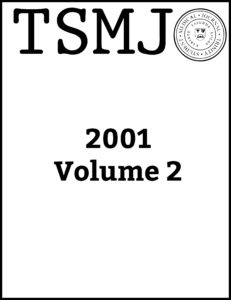Meningitis C Vaccination Uptake: A Study of Prevalence in Children of Medical and Non-Medical Card Holders
Keywords:
MedicineAbstract
Introduction:Neisseria menigitidis causes meningococcal meningitis, with the most commonly seen strains in Ireland being groups B and C. A vaccination programme began in Ireland in October of 2000, being introduced on a phased basis. Aim:This study set out to: (1) Estimate the prevalence of meningitis C vaccination uptake in children less than 5 years old. (2) Assess parental attitudes in those receiving and those declining vaccination. (3) Assess the source of vaccine information for parents. (4) Compare vaccine uptake in medical and non-med- ical card holders. (5) To compare uptake of other childhood vaccines to the meningitis C vaccine. (6) Evaluate the prevalence and type of early vaccine side effects. Methodology:An interview-based cross-sectional survey of parents of 100 children aged less than five years, selected at random from a range of departments at the National Children’s Hospital in Dublin. Results: Six out of every ten children had been vaccinated. Children of parents not holding medical cards were more likely to be vaccinated than those holding medical cards (Odds Ratio 2.4, 95% CI 1.02-5.41). The main source of information about the vaccination programme came from the media (49%) and the general practitioner (39%). The most common reasons for having their children vaccinat- ed was experience of the disease itself (39%) or following GP advice (32%). In those not vaccinating their chil- dren, the primary concern was developing meningitis from the vaccine (39%) or inconvenience (22%). There were no reported serious side effects from vaccination and the prevalence of minor side effects was 42%. Fever was the most common minor symptom reported (40%). Conclusion: The uptake of meningitis C vaccine is lower than other childhood programmes which may be due to its shorter duration of operation. There is a continuing need for efforts to be directed at improving awareness and to reassure the public about the safety profile of the vaccine. Such messages and issues of access to the healthcare system must take into consideration the differ- ential found between medical and non medical card holders. TSMJ May 2001, vol 2, 54-58.
Downloads
References
2 Maiden M. Meningococcal conjugated vaccine: new opportuni- ties and challenges. Lancet 1999;354:9179.
3 Sbyrakis S. Meningococcal vaccine and herd immunity. Lancet 1999;354:310.
4 Information from the Irish Health Board, access at http://www.meningitis.ie/programme.htm on the 2nd of April, 2001.
5 King S. Vaccination policies. BMJ 1999;319:1448-1449.
6 Information obtained from the Irish Health Board at http://www.meningitis.ie/vaccine.htm, accessed on 2nd April, 2001.
7 Suresh E. A teenager with rash and joint swelling after meningitis C conjugate vaccine. Lancet 1999;356:1486.
8 Wise J. Meningitis rates show steep fall. BMJ 2001;322:70.
9 Presentation given by Dr M. Fitzgerald at the National Childrens Hospital, Tallaght on 16th January 2001.
10 Jones I. Social deprivation and bacterial meningitis in NE Thames Region. BMJ 1997;314:794.
11 Uitenbroek DG. SISA – Binomial. accessed at http://home.clara.net/sisa/binomial.htm (Jan 2001).
Downloads
Published
How to Cite
Issue
Section
License
Authors retain copyright and grant the journal the right of first publication with the work simultaneously licensed under a Creative Commons Attribution (CC-BY) 4.0 License that allows others to share the work with an acknowledgement of the work’s authorship and initial publication in this journal.
Provided they are the owners of the copyright to their work, authors are able to enter into separate, additional contractual arrangements for the non-exclusive distribution of the journal’s published version of the work (e.g., post it to an institutional repository, in a journal or publish it in a book), with an acknowledgement of its initial publication in this journal.



